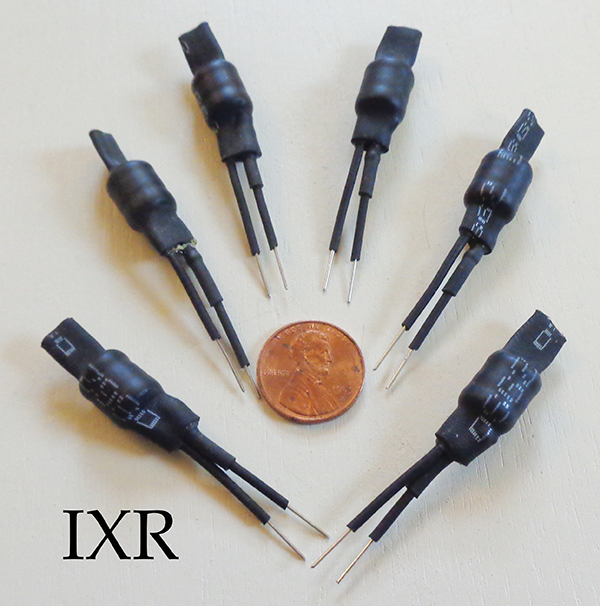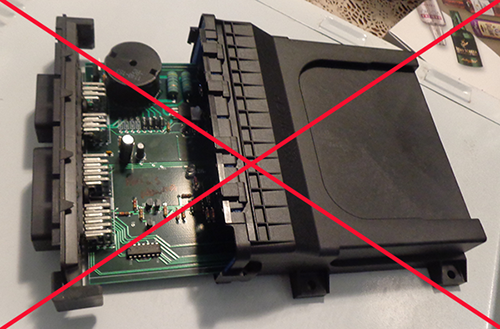We have become the proud distributor if the Interjector (IXR) from MPGenie.

Click here to purchase the Interjector (IXR)
Have you ever tried a fuel economy enhancing device only to find it didn’t work? The marketing may have shown solid science backing it, but yet it didn’t work. Maybe you did a mileage run immediately after the installation, “mistakenly” thought it worked great, but over the next weeks and months concluded it really didn’t? Either it didn’t work, or your vehicle’s computer (ECU) wouldn’t let it.
We have seen dozens and dozens of vehicles retrofitted with scientifically sound combustion enhancers, went on a maiden mileage run with fantastic results, only to have the ECU return the vehicle to stock mileage within a tank or 2. Statistically, it’s safe to say the ECU fights fuel economy gains when combustion efficiency is improved.
With a bone-stock engine, the ideal tune is what the factory programmed into the ECU. If you don’t believe me, just ask any Federal judge. However, if the engine has been legally modified for better performance, the stock tune is no longer ideal. Combustion events now look different. The fuel burns faster, perhaps there is a greater percentage of fuel vapor at the point of ignition, requiring less total fuel (turn the “choke off” a little bit more).

The Ecoceptor Team has built and tested numerous controllers that override spark timing and fuel delivery (and often, other functions). These controllers are labor and skill intensive to install. They also require a guru with mastery over the tuning process. This adds up to high complexity and cost.
Albert Einstein once said, “Make it as simple as humanly possible, but no more.” Although we were able to extract some fairly impressive fuel economy gains with the elaborate controllers, they simply weren’t marketable to the masses. Following the advice from the man once considered “The Smartest Man in the World”, we condensed and codified our experiences down to the simple Interjector™; aka the IXR™. This is our solution; the simplest, easiest, and most cost effective way to get the ECU to permit honestly earned fuel economy gains.
Scientific and university studies have unearthed a multitude of hardware technologies that, when applied to an engine, improve efficiency (at least in the lab). However, the factory ECU was never told you just made things better. Therefore the best hardware upgrades usually result in mediocre mileage gains (if any). The IXR is wired in parallel to the fuel injector (see our Installation Guide); a 4 cylinder engine uses 4 IXRs, an 8 cylinder engine uses 8. Electrically speaking, fuel injectors are inductive solenoids. Inductors have unique properties that we learned to capitalized on.
The IXR™ adjusts the injector’s electrical signature thereby allowing the ECU to accept and act on the Oxygen sensor’s lean command signals. This by itself doesn’t really change anything. In other words, the IXR itself is not a combustion efficiency enhancer. With the IXR installed, the ECU has an extended range to control AFR, so it can respond more appropriately when proper hardware upgrades improve combustion efficiency. It has a logical reason that makes sense in the software Compensation Tables. “Tuners” select injectors to meet the demands of improved engine performance. With a ported head, freer flowing induction & exhaust, and even a higher lift/duration cam(s), the stock injectors cannot keep up (see Engine Essentials). Performance engine builders often install larger, higher flow injectors to compensate. The oxygen sensor feedback system restores stoichiometric AFR under normal driving conditions, while the additional fuel is available when you hammer on it hard.
The IXR™ is NOT to be used on a stock engine! This may skew the ECU software strategies when the combustion characteristics can’t support it. It is a “compensator” to be used in conjunction with legal hardware upgrades that improve combustion efficiency. This may be the Magnetic Heat Exchanger (MHE), ignition upgrades, free flowing exhaust components, cold-air intake, HHO, grounding (recommended to be partnered with exhaust grounding), PCV system improvements — just about any of the tricks listed on this site (and/or many others) with the FE2 or FE3 Fuel Economy Rating. With new hardware, the IXR merely resets certain targets for the ECU.
The 2 leads of the IXR™ are electrically connected to the 2 wires of the fuel injector in parallel. This may be accomplished by stripping back some of the wiring insulation and soldering in place, or even by slipping the IXR leads down along side the wire into the factory connector. Once connected, it should be taped in place. For many engines, this can be a 15 minute installation.
Here are some IXR™ advantages:
- Will work with ALL engine efficiency enhancement upgrades such as: intake and exhaust systems, ignition system upgrades like Pulstar Plugs, fuel additives, combustion additives (HHO/ozone), fuel line enhancements (catalysts & magnets), PCV gas modifiers, throttle body modifications, etc
- Simple design means cost effective, low maintenance, easy installation, and durabile (less risk of parts malfunctioning)
- Enables MPG gains more consistently and universally, long term
- Sustains MPG efficiency gains and prevents ECU recalibrations on port fuel injected gasoline engines (not for Direct Injected GDI or diesels at this time)
- Environmentally compliant utilizing stock OEM programming to maintain AFR and ensure proper Catalytic converter function
- Eliminates tuning complexity: No need to tune ignition timing, air and/or coolant temperature Comps, engine load, oxygen sensor signals, throttle position, etc.
- Durable construction: Weather and water resistant
- Increased combustion efficiency results in lower emissions and less combustion by-products (such as HC, PM, CO2, CO, NOX)
- Increases power output as oxygen sensors can more accurately trim fuel, thereby reducing flame quench caused by excessively rich fuel mixtures
- Reduces carbon deposits and sludge build-up (increases engine oil life too)
- Optimal catalytic converter temperature maintained which may extend its lifespan (an expensive component)
In summary, the IXR™ allows the factory ECU to tailor fuel delivery to new engine combustion conditions. It relies on functioning factory oxygen sensors to target stoichiometric AFR. By lowering the “normal” threshold, the ECU can employ adaptive strategies in the Compensation Tables. We make no claims for fuel economy increases, however, we will say that the IXR allows the ECU to take better advantage of combustion improving hardware upgrades. Restated, if you install good hardware, you may see a 5% or 10% gain in efficiency. By adding the IXR, that gain will increase — perhaps over double! Every vehicle is different, every upgrade can have a different effect on results; we merely claim the IXR makes it better.
Used with FE2 and FE3 Rated Technologies
